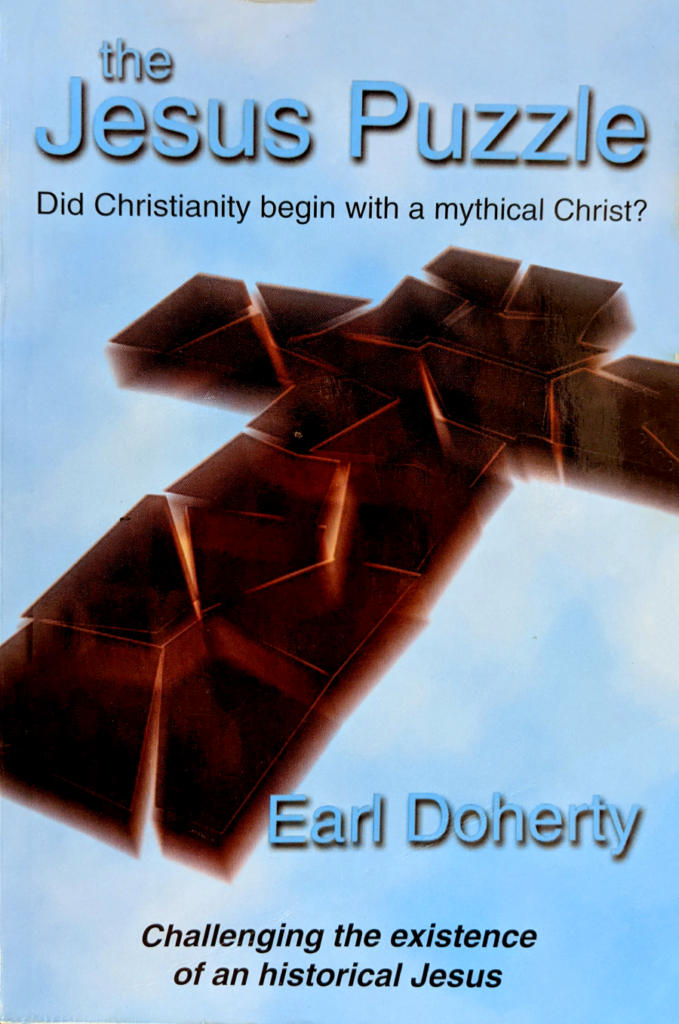Afterword

At age 13, I left the Christian religion and I have been fascinated by it ever since. Being the only atheist I knew in a family, community, and country of believers was a profound and strange experience that has never really left me. Why was I able to see through what so many people didn’t? Or what was I missing that everyone else was seeing? I went on to study at Boston University where I sought out the best philosophical arguments for and against belief in God and the particular claims of the Christian religion. I also had a hunger to understand how Christianity began.
I had the great fortune to have studied under Paula Fredriksen, who impressed upon me the importance of understanding the complex nature of the Judaism out of which this new religion sprung. Her book From Jesus to Christ put forth a well-argued case that I found compelling, attempting to explain how a historical Jewish man became worshiped as a god almost immediately upon his death. After four years, I graduated with a degree in Philosophy & Religion, still an atheist, still fascinated by the faith.

Reading the Bible itself at that age was an eye-opening experience. I had probably expected it to read like a dry theological treatise, but it turned out to be chock full of both wonders and horrors that I’d never heard discussed in church. The more I read, the more I came to see just how much of the content of the Bible simply wasn’t known to the great majority of Christians who, all the same, consider the book humankind’s greatest moral guide—the very word of God. That didn’t feel right. So a few years after graduating, I began what would become a 12-year project to illustrate the entire Bible in LEGO bricks, from Genesis to Revelation. To my delight, it greatly connected with people across the spectrum of belief, becoming a hit website and published book series.

Over the years, I’ve enjoyed keeping abreast of the latest scholarly books concerning the historical Jesus and related subjects. And in doing so, at some point my understanding of the origins of Christianity dramatically shifted to a new paradigm. Prompted mainly by the research and analysis of writer Earl Doherty, I became convinced that analysis of all the available evidence strongly supports the conclusion that the earliest Christians knew nothing of a Jesus who had recently walked the Earth, and that the religion was born out of faith in a purely heavenly “Lord Jesus” whose only visit to Earth would be a future one when he would be accompanied by an army of avenging angels at the End Times.
Additional similar and supporting arguments by more credentialed scholars followed, making the case for the ahistoricity of Jesus even stronger. But something I couldn’t help but notice was that all of these works were only focusing on that one specific point. None of them told the historical drama of the people and events leading up to the birth of Christianity without an earthly Jesus, and none told the story of how it was that a religion formed around an ahistorical savior could become the religion that swept the Roman Empire and was bequeathed to modern civilization.
That is what prompted me to begin the project of writing this book in earnest six years ago. I immersed myself in countless hours of reading and note taking, learning new things, and eventually beginning to form the skeleton of what would come to be the core of this book’s thesis: the unbroken line that runs from Persian Zoroastrian influence to the Judaism of the Zadokites and Essenes, to the earliest Christians, whose movement was almost immediately coopted by the apostle Paul—all resulting a new religion whose doctrinal divides, concern for suppressing “heresies”, and resultant infighting were baked-in from the very start.
While here I am putting forth my best understanding of the birth of Christianity after many years of study, I’d like to make it clear that I am not personally invested in my thesis being correct. If new evidence or better analysis were to demonstrate that it is very likely Jesus was indeed a historical figure, great!

If I’m wrong and that’s the case, then it’s almost certain that Jesus would have been—like John the Baptist, James the Just, and the apostle Peter—a Jewish leader who emerged from the Essene society, very strictly followed the Laws of Moses, and helped foment the rebellion against Rome in order to spur the coming of the messiah to vanquish all enemies of the Jews. This activity would have led directly to his execution which was carried out by Rome in a manner reserved for political insurrectionists. Such a thesis is the current scholarly consensus and has been well argued in books such as Zealot: The Life and Times of Jesus of Nazareth by Reza Aslan, Jesus: Apocalyptic Prophet of the New Millennium by Bart Ehrman, and Jesus of Nazareth, King of the Jews by my former professor Paula Fredriksen.

One of the greatest strengths of any evidence-driven field are the practitioners who maintain enthusiasm for unshackling themselves from outdated theories in favor of ones that have better evidential support and explanatory power. As stated at the start of this book: a few generations ago, it was the scholarly consensus that Moses was a historical figure. A few generations before that, even Abraham was assumed to have once lived. Before that, Adam and Eve. Even today, now that a whole cottage industry has sprung up among scholars, each giving their take on the real “historical Jesus”, there has been great reluctance to take seriously any suggestion that the legendary founder of Christianity might somehow also not have walked the Earth. I suspect this will soon change.
Return to: